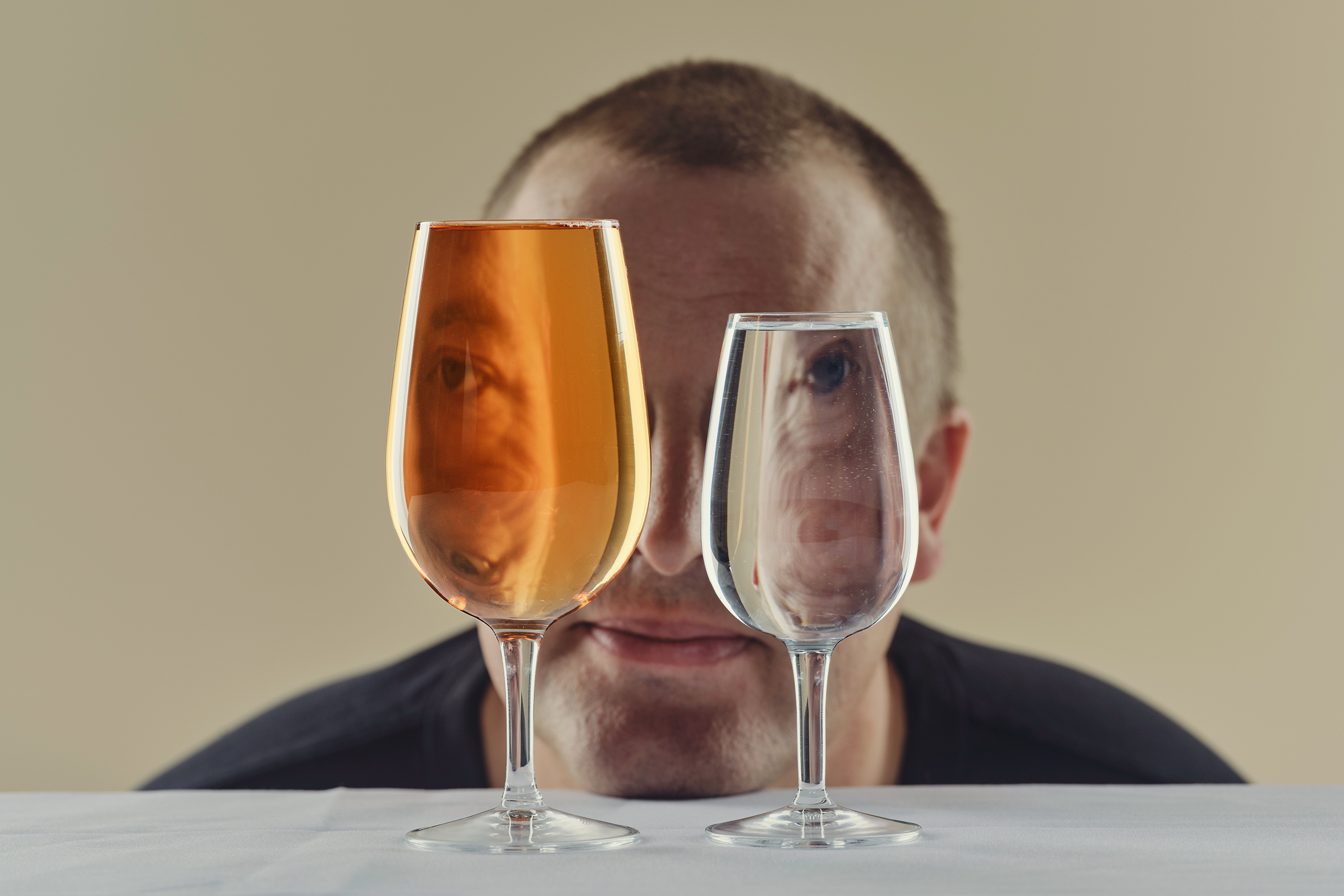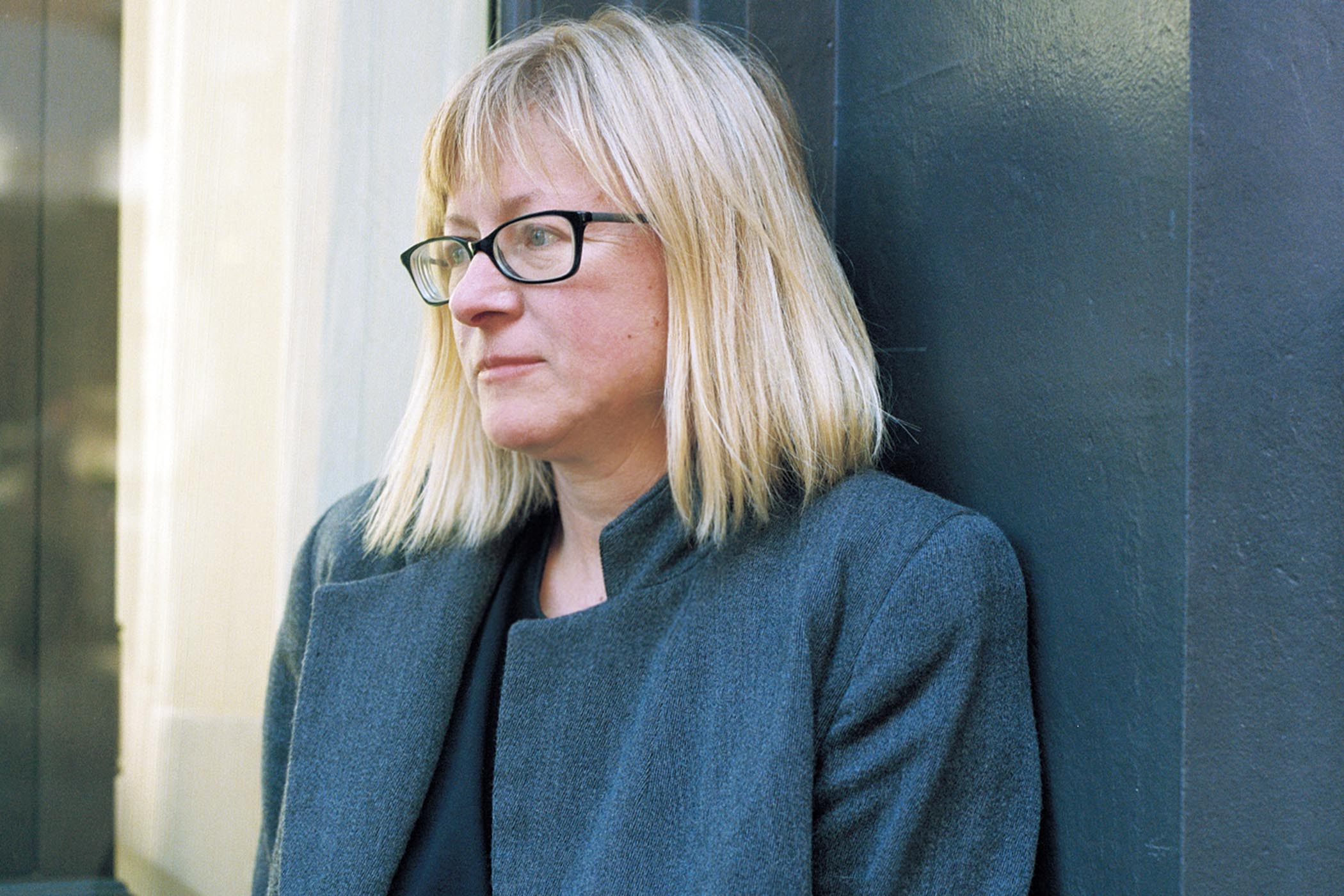Photographs by Nick Ballon
It’s the spitting that you notice the first time you go to a professional wine tasting. A whole room full of serious, studious, often very smartly dressed people sniffing, sipping and swirling their glasses, but mostly, and most strikingly, spitting wine into various receptacles strategically placed around the room. Every 30 seconds or so, each taster lets loose another mouthful, with varying degrees of velocity and insouciance. Some have mastered the art of the quick, hard, almost disdainful jet that resounds off the stainless-steel spittoon like a bullet; others have a looser, more slobbery style that involves a quick lowering of the head over the spittoon basin to allow them to open their mouth and let the contents fall into the phlegmy cocktail below.
The more you watch, the more you recoil. But you might also marvel at the way each taster seems to know instinctively, almost without looking, when to approach the spittoon and do their business, and when to wait. Whether the spittoon in question is a hip-high freestanding contraption that looks like a minor European football trophy, or a smaller table-top number that’s more like a repurposed ice bucket, the tasters act like careful but confident drivers at a tricky junction, or chefs in a busy kitchen. Accidents with full spittoons do happen: in my more than 25 years of taking part in this curious ritual, I’ve been both an ashamed perpetrator and a disgusted victim of spillages that have felt almost medieval in their squalor. But such incidents are remarkably rare given the sheer quantities of alcohol sloshing around, a fact that is its own answer to the question of why the spittoons are there in the first place.
For the thousands of people who work in the UK wine trade (193,000, according to the Wine and Spirit Trade Association), and especially for those of us the members of the subset who, like me, taste large numbers of wine almost every day – a group that includes sommeliers, merchants, importers, supermarket buyers, wine educators and winemakers, as well as a growing number of professional online wine influencers and a shrinking coterie of professional wine writers – the job would be inconceivable without this constant spitting. The spittoon is our crash helmet, our safety harness. We’d be dead without it, or at the very least dead drunk almost all the time.
My own numbers, when I add them up, are hair-raising. As I write this, in early October, I’m in the middle of one of the busiest periods of the year for British wine writers, the autumn being one of two tasting “seasons” (the other is in the spring), when the UK’s retailers and importers host the press and other members of the trade at events designed to show off the latest highlights from their ranges. Although it’s possible for a wine professional with the right connections to go to a tasting event almost every day of the year (and many lunches and dinners, too), in the periods from March to May and from September to November, there are dozens of events each week, mostly in London, with anything from 50 to more than 1,000 wines available to taste at each one. I can only attend a fraction of what’s on offer. Last week, it was the turn of Lidl, The Wine Society and Sainsbury’s, each of which took me between three and four hours to complete. Over the next few days I’ll be going to events put on by Majestic, Waitrose and Tesco. Which means I’ll easily taste as many as 600 wines in a week.
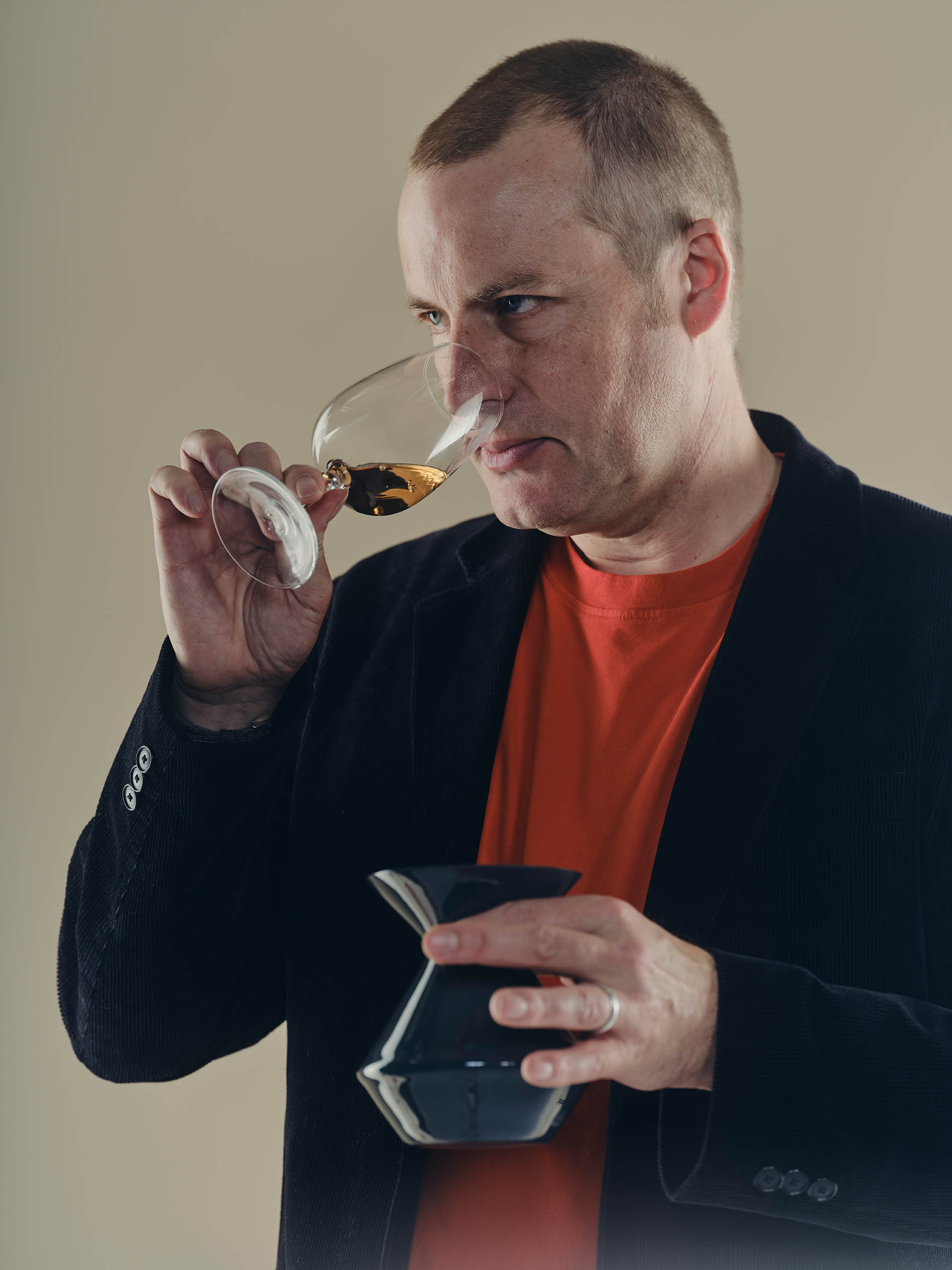
Even outside peak season it never really lets up. Looking back over my calendar and notebooks from the past year, I can see how rare it is for a day to pass without my tasting at least a handful of the several hundred sample bottles (some I’ve requested, most unsolicited) that get sent to my home by producers, importers, retailers and their PRs each year. I also do numerous smaller tastings for articles in magazines, such as my other place of work, The World of Fine Wine, where I spend the day in quasi-laboratory conditions – white tables, lots of natural light – with a pair of wine-writing colleagues in quiet, almost monkish contemplation of a set of between 30 to 80 wines made in a particular place or from a particular grape variety. We taste each wine blind (ie without knowing the producer) from pre-prepared bottles swaddled in plastic bags, write an extended, detailed tasting note and give a score out of 100, like a teacher writing a report.
Other places for intense tasting are trade fairs. In May, I visit the London Wine Fair, which draws a crowd of around 10,000 trade professionals to taste wines from around 500 exhibitors over three days at Olympia. In February, I go to the vast Wine Paris. Perhaps I’ll judge at a wine competition, such as the Wine Merchant Top 100, which runs in April, where, as the chairman of the judges, checking the work of a panel of 30-odd independent wine-merchant judges, I taste nonstop. And then there are the six or seven press trips I take to wine regions each year, when I share a mini-bus with a group of other wine journos for anything up to a week of vineyard and winery visits. Half school- field- trip, half gourmet tour, these peculiarly intense excursions, almost always with all expenses paid for by local producer associations (Wines of Germany, say, or Inter Rhône) are undoubtedly a perk of the job, and the biggest reason why people might think I have the cushiest gig in the world. But they do have a serious purpose. As well as being by far the best way to really understand a region and its wine styles, and the full geographical and cultural context that shapes them, the press trip is also easily the most efficient way to taste as many of a single region’s wines in one hit as possible.
I do realise all this bibulous accounting – an average of about 18,000 wines a year is my conservative guess – might come across as an upmarket version of the tedious “mad night” drink itemisation of the pub bore, a posher take on a list of all last night’s pints, and the shots, the Jägerbombs and the weird liqueurs before the kebab on the way home.
But I don’t mean to make some idiotic macho point about my capacity for alcohol. Without wanting to strike up my miniature Stradivarius, tasting 100 wines in one sitting, and maintaining concentration to give each wine its due share of attention, is, if not exactly hard work in the grand scheme of 21st-century labour, then at least tiring at times. There is a special kind of dread that comes with facing a line-up of dozens of thickly tannic red wines at 9am on a winter’s morning if you’re feeling even slightly under the weather. And no matter what I’m tasting, I always feel an odd, slightly edgy mix of wired and weary after a big day of slurping and spitting, a feeling that can’t simply be explained away by the effort of finding words to match my sensations. The alcohol is definitely playing a part. No matter how much spitting I do, I’ll always be absorbing some units while tasting, always asking my liver to take a hit without experiencing any of the pleasant effects that would come with sitting down and actually drinking the equivalent amount of wine in a single glass, like a normal person.
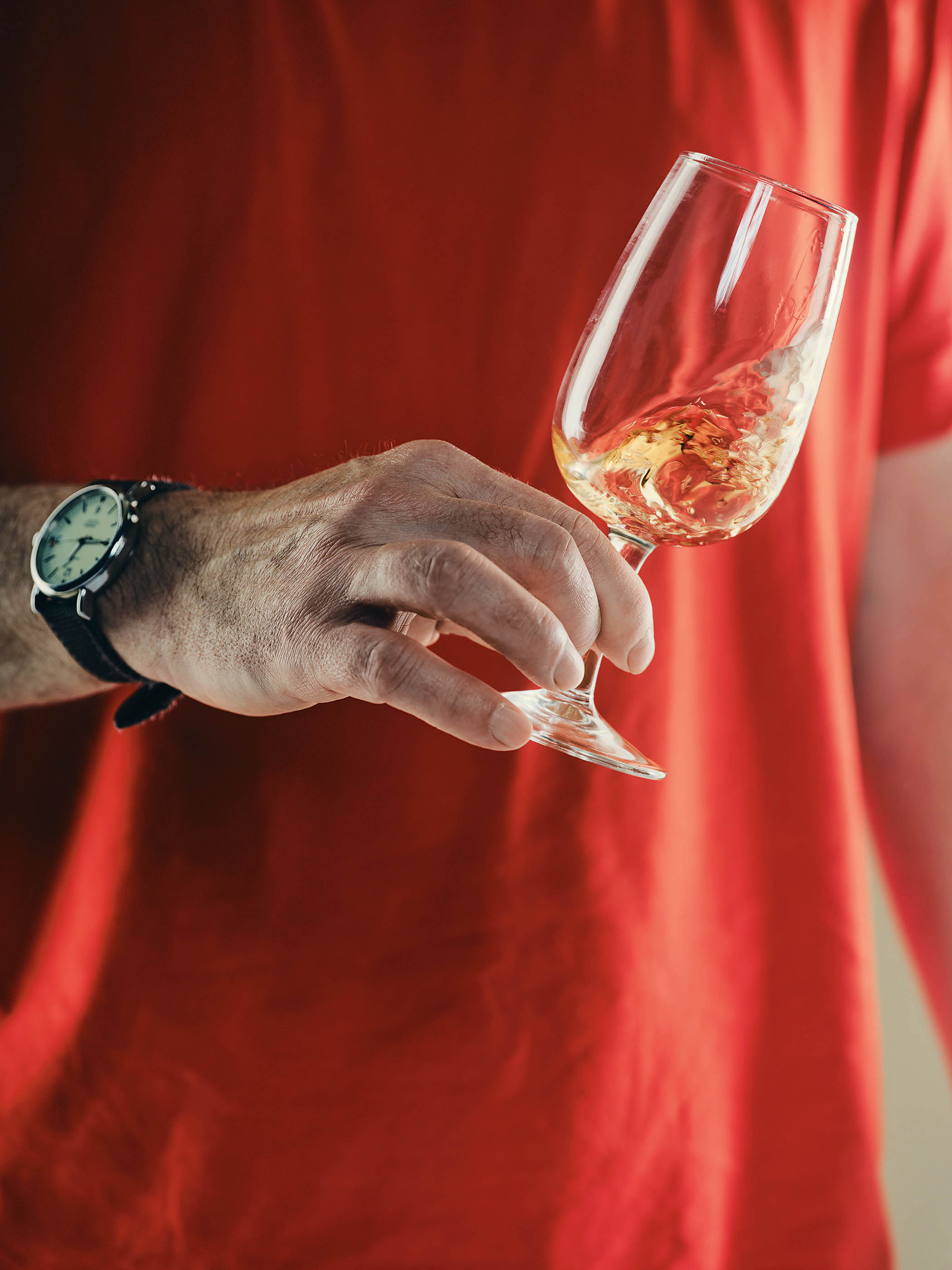
But sometimes I do drink like a normal person. I don’t buy a lot of wine – it feels unnecessary, when I have bills to pay and a family to support, to spend money on wine when there’s a glut of sample bottles in the garage. And, fortunately, there’s usually something worth drinking in any given batch, which is what I tend to have with dinner.
Like most people who came of age in the hedonistic 1990s, there have been times when my drinking has been excessive. And, strictly speaking, since I am so often breaking through the government’s recommended weekly or daily limit, it still is. But I’m no longer the last to bed, I always make sure to have a few dry days without drinking each week and, since I quite like my mornings unfuzzy these days, I tend not to reach for the second bottle after the plates have been cleaned away. I try to be careful, in other words, but obviously my place of work isn’t always conducive to caution.
At wine dinners in a winemaker’s cellar, at a restaurant or banqueting hall, the table often looks more like a glassware showroom, with each place setting surrounded by a forest of gleaming glasses of varying sizes, each with its small portion (filling a glass is very much a faux pas in wine circles) of what are often very fine, rare and expensive wines. It’s hard, in these cases, to resist. Indeed, no matter how I might feel about that week’s ballooning unit count, it would be rude not to drink, since it’s at these moments when wine people live up to their justified reputation for generosity.
But, let’s be honest here, I wouldn’t be in this business if I didn’t enjoy wine’s psychoactive effects every bit as much as its taste, and I’m aware that comes with a certain degree of risk. The warning signs are all around me: I have met plenty of problem drinkers working with wine over the years, and been witness to many embarrassing, troubling or just quietly desperate incidences of public drunkenness at all times of the day and night at wine trade events. And while I don’t know for sure if alcoholism, or alcohol dependency, are more prominent in this trade than others (wine people can be surprisingly ascetic and abstemious when they’re not tasting), there’s no doubt that a working environment filled with booze is no place to be if you have a drinking problem. And I’m under no illusions about how hard it would be to make the decision to find help if your very means of making a living is tied to the stuff that is doing you harm.
I was hooked. Obsessed. I still am. You never stop learning about wine
And the endless slurping takes its toll in other ways, too. Unless you have freakishly strong and healthy teeth enamel, you can’t expect to spend large parts of your waking hours swilling acid and tannin around your mouth without expecting some kind of dental payback. My own tax so far has been the four molars, extracted one after another in a single sitting by a dental surgeon in Ipswich last year, a procedure that provided relief and a release after an increasingly desperate, pain-addled three-year hunt for an NHS dentist, having moving to the “dental desert” of Suffolk four years ago.
Being a wine critic is, however you dress it up, a very strange way of making a living. And like most of my wine- writing peers – like most people I know in the British wine trade, come to think of it – it was not something I planned to do. If you’d told my younger self, with his nebulous ambitions of writing novels, or doing something socially involved in an ill-defined, vaguely left-wing sort of way that, in a matter of years, he’d be tasting hundreds of wines a week and writing about it for a living, I’m not at all sure he would have approved. Too hedonistic, for one thing. But also, far too posh.
Not that I see myself, or would have seen myself, as some sort of tribune of the people. And I’ve never regarded wine itself as something that was not for the likes of me, either. I come from a very specific but quite broad strand of the British middle-class: my parents were both classic postwar-settlement working-class kids who were the first in their families to go to university and who both went on to be secondary school science teachers. Neither had grown up with wine. But they had both effectively joined the middle-class at a time – the 1970s and 1980s – when wine itself was becoming much more widely dispersed, democratised even. It was no longer merely something the upper and upper-middle classes bought from their longstanding friend-of-the-family wine merchant, but an affordable partner for the newly cosmopolitan food on offer (Pesto! Hummus!) alongside the ever-growing wine ranges in the rapidly expanding supermarkets.
An aspirational product, perhaps, and increasingly so as the Thatcher years wore on. But for my parents, and particularly my chemistry-teacher father, it was also something that could become became a hobby, one that appealed to both his scientific curiosity and his love of socialising with his friends. Along with playing football, squash and tennis, it became an important part of his regime for combating the stress of being a deputy head and teachers’ strike co-ordinating NUT union rep at a large comprehensive school in the Crouch Valley, a marshy corner of Essex that in recent years has become (in a development that still amazes us both) one of England’s finest vineyard areas.
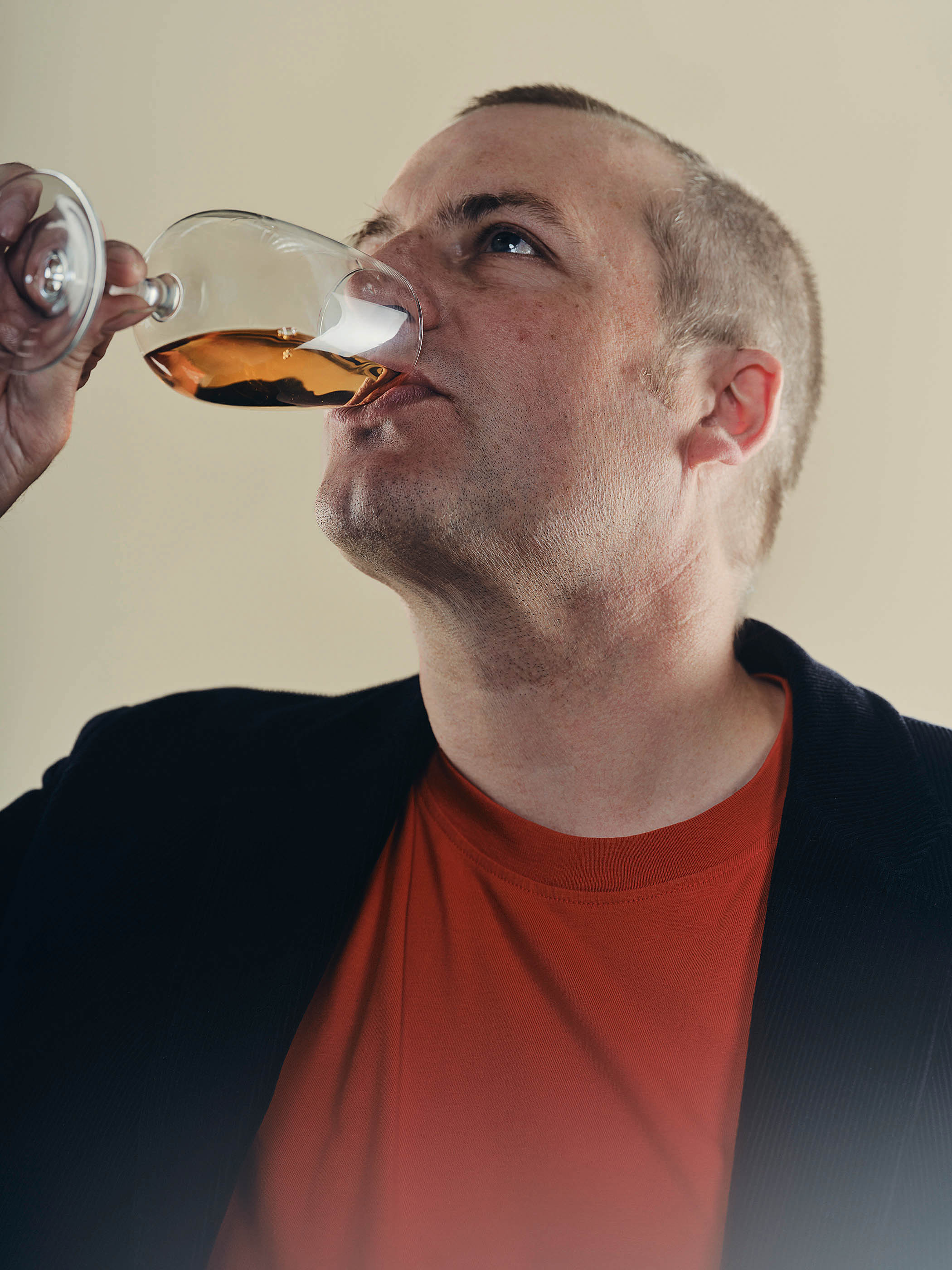
My father was not alone in his new hobby, but he took it much further and more seriously than most new converts of his generation. First, he tried his hand at making foraged elderberry wine, which, after being massively diluted with R Whites Lemonade, was my and my sister’s first experience of drinking wine. Later, he ripped up one side of the lawn in our suburban semi’s back garden to plant a row of vines from which he made apparently drinkable white wine in demijohns in the garage. He also started a wine club, still going strong with some of the same members almost half a century later, which would meet every couple of weeks for a talk from Dad and a tasting (more of a “drinking” since there was absolutely no spitting going on) of wines that Dad had selected and paid for with their subs.
As we got older, my parents took us on camping holidays to Europe, the campsites selected (it occurred to me later) for their proximity to wine regions, from Burgundy to Rioja, and the car on the way home filled to the painstakingly calibrated duty-free limit with a wine encyclopaedic collection of different bottles. But perhaps most impressively of all, Dad’s competitive autodidactic tendencies led him to enter and, after competing in regional heats, reach the national final of the Amateur Wine Taster of the Year run by Sainsbury’s and the Daily Telegraph several years in a row.
Growing up in this environment meant wine never felt exotic or obscure in the way it seemed to be for many of my friends from similar backgrounds. My father taught me the basics of wine – the rudimentary stuff about appellation systems and grape varieties that meant I could hold my own on the subject and not feel intimidated by a wine list. I liked knowing roughly what to expect from the limited repertoire of mostly French regions I was familiar with, and I enjoyed being known as the closest thing my circle of friends had to a wine buff, a source of advice for anyone looking for a smarter-than-usual bottle to take to dinner, even if I knew that what they were really after was access to my father’s genuine knowledge.
For a long time, that was as far as my interest went. And then a friend of mine tipped me off about a staff-writing job at a trade magazine, Harpers Wine & Spirit Weekly, when I was looking for a full-time job in journalism after a couple of years teaching English and doing occasional bits of freelance writing in Japan. What I found at Harpers, as I began a month-long work- experience placement that turned into a six-year stint on the staff at the turn of the millennium, was journalism only in the very loosest sense. Based in the cramped attic of an office building in Southwark, one of the centres of the London wine trade, the magazine, which had been going for more than a century at this point, was more like the in-house parish journal of the traditional, gentleman-amateur British wine trade than anything resembling a serious news magazine. It was a place for wine-trade friends of the publishers and senior staff to make announcements about their latest products and staff moves and air pet peeves (usually about tax and duty rates) in exchange for paying for advertising space. Deals were struck at tastings and over long lunches – the senior editorial staff returning to the office sometime in the late afternoon to finish the day with a snooze or a giggle on the phone.
I spent much of my early time there rewriting press releases about packaging and exaggerating my wine knowledge, but w When I was sent out to report on an event, it was like stumbling into a world where the clocks had stopped at some point in the Edwardian era, a world of pin-stripe suits, old-school ties, pink shirts and red trousers; of oak-panelled gentleman’s clubs, plummy, largely male voices, and an arcane, faintly sexist and classist language of wine tasting full of weird turns of phrase like “good breeding”, “masculine”, and “buxom”.
It would be absurd to say I experienced anything resembling prejudice in this bygone environment, since most of the people I met were the definition of what I’ve since come to think of as the wine trade’s defining characteristic: hospitable. But in that subtly poisonous, paranoid way of British class dynamics, I was always aware of being ever so slightly different to most people in the room, purely by being a state-school kid. It was a sensation I’d never experienced before: self-conscious and suddenly noticing the mild Essex tinge to my otherwise blandly middle-class southern accent, and forever feeling like I’d made some mysterious faux pas without knowing exactly when or why.

Fortunately for me, both Harpers and the wine trade itself were in the midst of change. In my first year working there, the magazine suddenly became a real news weekly, with a much more socially diverse team of properly trained journalists with backgrounds in local news, the trade press and academia, led by my charismatic predecessor as the Observer’s wine critic, Tim Atkin, and Christian Davis, the magazine’s deputy editor, a true south London boy and South London Press veteran hack who saw in me a kindred spirit and became my journalistic mentor.
I got to travel the world following the many fascinating stories that were emerging from a wine industry that had been transformed by the era’s globalisation and the effects of the rise of the so-called New World on wine’s traditional European heartland. I reported on the painfully slow steps towards equality in South Africa’s post-apartheid wine industry, and the endless struggles and sometimes fierce protests of the winemakers of France’s Languedoc-Roussillon, as they tried to come to terms with falling demand for their wines. I wrote about the ingenious ways Argentina’s wine producers developed to cope with their collapsing economy (plus ça change) and the berserk bull market that turned the finest wines of Bordeaux and then Burgundy from affordable middle-class treat to the investment tool for the global elite that they are today.
I soon saw that the wine world was a kind of microcosm of the larger world, a place dominated by the wealthy, by money both old and new,aristocratic and multinationally corporate. But it was also peopled by some quite remarkable individuals: the winemakers who, whether working on vineyards that had been in their family for generations, on small patches of rented vines they’d mortgaged their house for, or as the hired hand of a more or less benign owner, could not help but infect me with their seemingly inexhaustible enthusiasm for the endlessly varied pleasures of the product they’d devoted their lives to.
And all the time, I was tasting and, almost imperceptibly at first, learning from these best possible teachers how to do it. What to look for; how to pay real attention to the wine’s constituent parts, the tannins, acidity and fruit and other flavours; the intensity, complexity and length – and how they come together to create that nebulous but vital quality that all the best wines share: balance.
I was hooked. Obsessed. And 20-odd years later, I still am. You never stop learning about wine. There’s always a new vineyard, a new producer, a new vintage. And while many of them are ordinary at best, or boring to the point I resent their contribution to my ongoing dental nightmare, I always know that somewhere, if not today then surely tomorrow, there’s a wine waiting to bring me up short; a wine that does that thing that nothing else I’ve found – no food nor drink, not even music or words – can quite emulate. A kind of vivid transportation to the scents and flavours of another place, a simultaneous, almost transcendental stimulation of mind and body. A wine, in short, that I can’t bring myself to spit.
Drink like David: his top tips and tastings
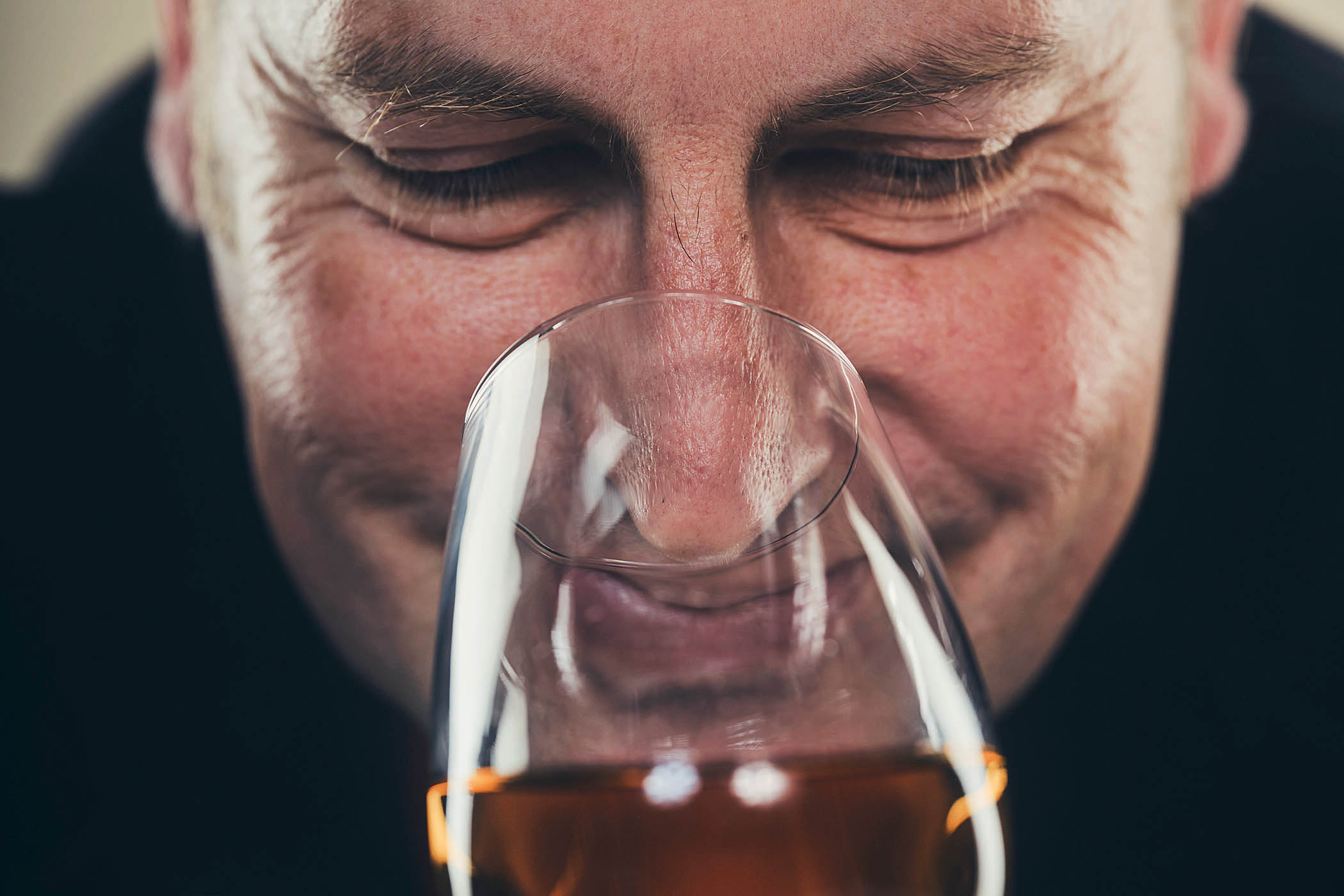
How to taste wine
Pay attention to the colour and shade
You can tell plenty about a wine’s character before you so much as sniff it – the colour, its intensity and brightness, whether it’s opaque or transparent, and the level of viscosity are the first clues to look for.
Swirl and give a good sniff
The nose is the dominant organ when it comes to perceiving flavour, which is why wine tasters are always swirling their glasses to release as many aroma compounds as possible. It’s such a habit for me, I sometimes catch myself doing it with water. And I find it impossible to taste with a cold.
And slurp
Swishing the wine around your mouth is about pinning down its flavours, but also examining what wine tasters call “structure” – the level of acidity (a mouthwatering quality you tend to feel on the side of the tongue), how much sugar there is, the quantity and feel of the tannins (a drying quality that you also get in tea), the alcohol (does it burn the back of the throat?), how long the flavours last (the “finish”). And, whether or not those elements are in harmony.
Compare and contrast
The best way of learning about wine and deciding which styles and attributes you like is to taste different wines alongside each other.
Take notes
This is a great way of helping you pay attention to the wine, and of remembering what you liked or didn’t like about it. It doesn’t really matter what you say so long as it’s meaningful to you and you’re consistent.
Five questions to ask a sommelier
Who’s the producer?
The maker is one of the most important factors shaping wine quality, style and price, so if the name’s not there, ask for it, even if it’s just to give you something to google.
What’s best within my budget?
While some sommeliers are inveterate upsellers, most understand and want to work within your parameters, so don’t be shy about naming your price.
What suits your taste?
There’s no shame in having strong preferences for and aversions to certain foods, and wine’s no different. If you don’t like chardonnay, tell the sommelier – they’re there to give you what you want.
What will go well with my food?
The sommelier’s main job is to find a wine that will enhance the food you’re about to eat and vice versa – it can really add something to a special meal, and they will love you for asking them why they’ve made their choices.
Can you check this wine?
When the sommelier gives you a sample to taste, it’s not really about whether you like it or not, it’s to test if it’s faulty. If you don’t like the smell, but don’t know the difference between bad and corked wine, put the question back to them – is this alright?
Five favourite wine regions
Barolo in the autumn, Piedmont, northwest Italy
There are few more enchanting places in the wine world than Barolo, but especially in the autumn, when the undulating slopes of vines are a riot of reds and browns and the truffle-season provides perfect matches for the nebbiolo wines.
The Douro, Portugal
The steep stone terraces of vines that rise up from the broad river Douro are a spectacularly beautiful sight, but the home of Port, with its curious mix of Portuguese and upper-class British culture, is also just a sociologically and historically fascinating place to spend a few days.
Burgundy’s Route des Grands Crus, France
If you’ve ever been to New York, you’ll know that uncanny pinch-me feeling of being in places you already know from countless films, and a trip up the 60km road through Burgundy is the wine equivalent, each vineyard a reminder of some of the finest Pinot Noir and Chardonnay wines I’ve read about, tried or desired.
Georgia
It may be the 8,000-year-old wine culture, with its qvevri claypots and unique grape varieties; it may be the utterly distinctive, yet delicious food; it may be the hypnotic chanting from orthodox chapels echoing over vineyards; whatever the reason, there’s no wine place on earth quite like Georgia.
Salta, Argentina
Mendoza is the high-altitude Andean hub of Argentinian wine, but, as well making a high-definition style of malbec and tannat reds and torrontés whites, the Calchaquí Valleys of Salta, in the country’s fast northwest, are both dizzyingly higher (with vines planted up to 3,000m above sea-level) and more colourfully beautiful,
Five memorable bottles
Château Lynch-Bages, Pauillac, Bordeaux, France
Most serious wine lovers will have a bottle where everything special about wine suddenly clicked. Mine was the 1985 vintage of this claret, from one of Bordeaux’s smarter estates. Suddenly all that talk of complexity, depth and structure made sense.
Joan d’Anguera Altaroses, Montsant, Catalonia, Spain
My family and I spent a few years living in Girona, and this elegant garnacha red from Montsant, near Tarragona, became a house wine of sorts. Drinking it now brings flashbacks to our slightly dilapidated house in that beautiful city.
Champagne Henriot Cuvée des Enchanteleurs, Champagne, France
The wine world is full of generous people, but my long-standing colleague and friend Neil Beckett is perhaps the most generous of all, the source of many best bottles I’ve drunk over the years, including the unforgettable 1988 vintage of this glorious Champagne.
Sadie Family Columella, Swartland, South Africa
South African winemaker Eben Sadie is a ceaselessly inventive, thoughtful and fastidious soul, who started out with a handful of barrels in 200 and whose wines, led by this ethereal red Columella, have transformed perceptions of his country’s wine.
Domaine du Cros Lo Sang del Pais, Marcillac, France
This unpretentious, idiosyncratic, thirst-quenching red from the Aveyron in southwest France, with its slightly ferrous and feral quality, light alcohol and brisk crunchiness may well be the single wine I’ve drunk most of down the years: at £10.95 from The Wine Society, the 2023 is a total steal.
Read more of David’s recommendations online at observer.co.uk
